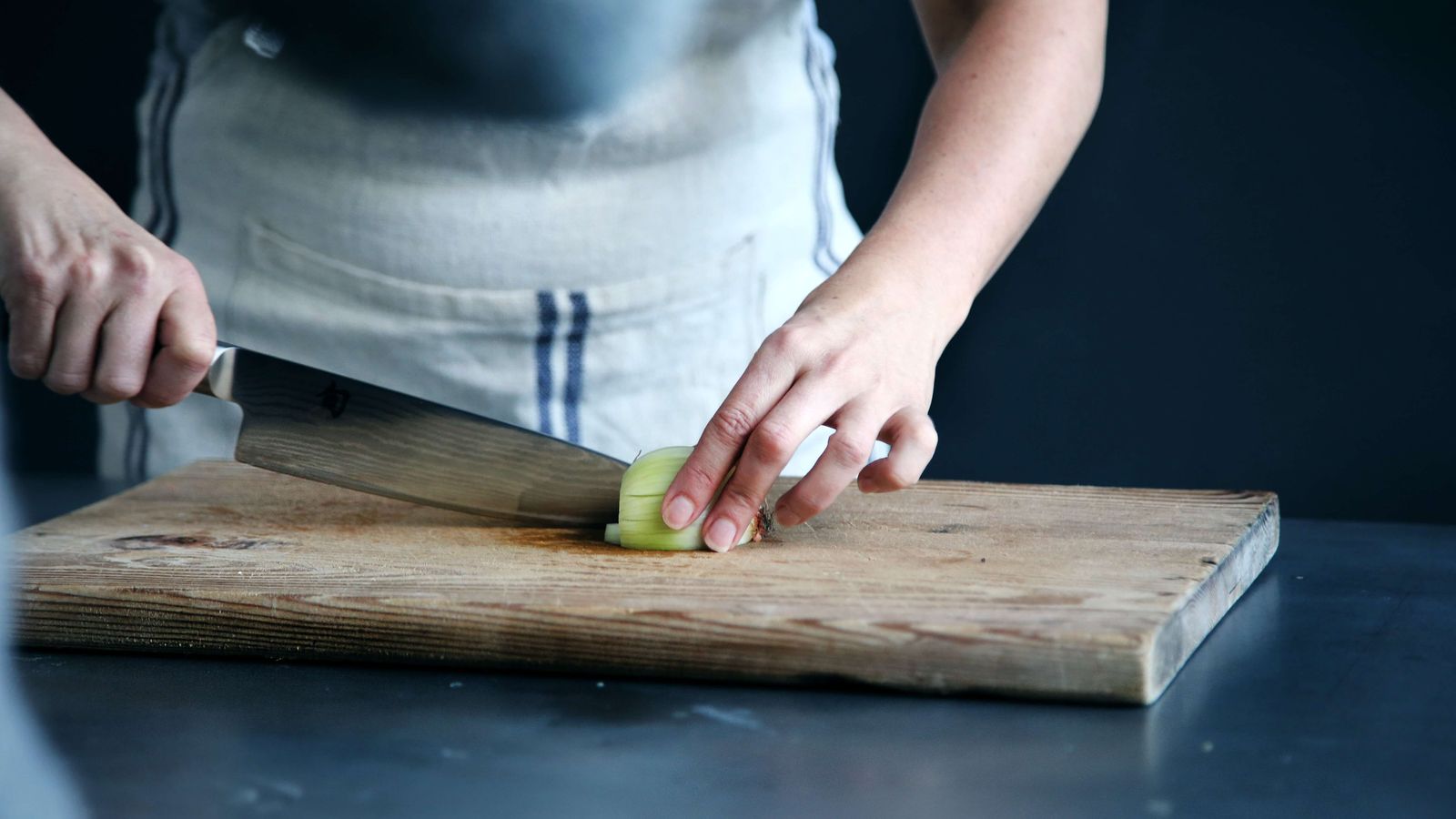Welcome to the world of Japanese chef knives, where precision meets artistry, all without breaking the bank!
This micro-guide will help you navigate the landscape of affordable Japanese chef knives, showcasing that quality and budget can indeed go hand in hand.
Jump To:
- The Art of Japanese Knife Making
- Distinct Features of Japanese Chef Knives
- Caring for Your Japanese Chef Knife
- Frequently Asked Questions
- Conclusion
- Further Reading
The Art of Japanese Knife Making
Japanese knife-making is a centuries-old craft blending traditional techniques with modern technology. The result? Knives that are as beautiful as they are functional. Even under $100, you can find Japanese chef knives reflecting this unique blend of art and utility.
The process begins with the selection of the right steel. Japanese knives often use high-carbon steel, known for its hardness and ability to maintain a sharp edge. The steel is then forged, which involves heating, hammering, and cooling the metal to shape it. The blade is then ground and sharpened to a razor edge.
The handle is another important aspect. Traditional Japanese knives often feature a 'wa' handle, which is cylindrical or octagonal and made from wood. This design is lightweight and comfortable, allowing for precise control.
Distinct Features of Japanese Chef Knives
Japanese chef knives are known for their sharpness, precision, and lightweight design. Here's what sets them apart:
- Sharpness: Japanese knives are renowned for their razor-sharp edges. This is due to the hard steel used in their construction and the thin, acute cutting angles. The sharpness allows for precise cuts and a smooth, clean-cut surface, which is particularly important when slicing raw fish for sushi or sashimi.
- Blade Design: Many Japanese chef knives feature a single-bevel design, meaning only one side of the blade is sharpened. This allows for incredibly precise cuts, especially for slicing thin pieces. It also means that there are right-handed and left-handed versions of the knives.
- Lightweight: Japanese knives are typically lighter than their Western counterparts, making them nimble and easy to maneuver. This is due to the thinner blades and lightweight handles, which make the knife feel like an extension of your hand.
Caring for Your Japanese Chef Knife
Maintaining your Japanese chef knife is key to preserving its performance and longevity. Here are some tips:
- Cleaning: Always hand wash your Japanese chef knife. Dishwashers can be too harsh and may damage the blade. Use warm water and mild soap, and dry the knife immediately to prevent rusting.
- Sharpening: Use a whetstone to sharpen your knife. This traditional method provides the most control and is preferred by professionals. Soak the whetstone in water for about 15 minutes before use, then hold the knife at the correct angle and slide it across the stone.
- Storage: Store your knife in a dry place and consider using a knife sheath to protect the blade when not in use. A wooden knife block or magnetic strip is also a good option. Avoid storing the knife in a drawer where it can get damaged.
Frequently Asked Questions
Can I find a quality Japanese chef knife for under $100?
Absolutely! While high-end Japanese chef knives can be expensive, many affordable options offer excellent performance and durability.
What makes Japanese chef knives unique?
Japanese chef knives are known for their sharpness, precision, and lightweight design. They often feature a single-bevel blade and are made using traditional Japanese knife-making techniques.
How do I care for my Japanese chef knife?
Hand wash your knife, sharpen it with a whetstone, and store it in a dry place. A knife sheath can also help protect the blade when not used.
Conclusion
Embracing the world of Japanese chef knives doesn't have to be a costly affair. With the right knowledge, you can find a high-quality, affordable Japanese chef knife that suits your needs.
For more insights into affordable culinary tools, check out our article on Finding the Best Chef Knife Under $100: A Micro-Guide.
Further Reading
- Finding the Best Chef Knife Under $100: A Micro-Guide - Dive into the factors that make a chef knife worth investing in, even when you're on a budget.
- Quality Chef Knives Under $100: High Value, Low Cost - Understand the relationship between price and quality in chef knives, and how to find a balance that suits your needs.
- Best Chef Knife Under $100 and $50 by The Flavor Dance - Explore 6 picks for chef's knives priced under $100 and $50.



